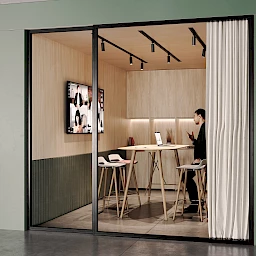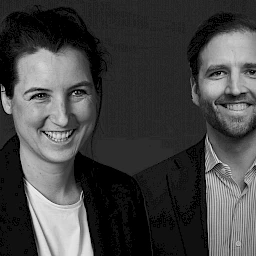Ralf Freter, workplace consultant at Steelcase AG and Caroline Mölling, Business Development Manager at Steelcase, talked at HR trade fair Zukunft Personal in Cologne in September 2022 about the office as a place of desire and the question of how work environments have to be designed in the future so that employees enjoy coming to the office. In this context, Caroline Mölling quotes the US economist and author of the book “The rise of the creative class”, Richard Florida, who believes that the human factor is the key to creativity and innovation:
“Ideas are the currency of the new economy. Driven by global megatrends, companies will be forced to strengthen their innovation.” Richard Florida
Releasing employee potential and enabling creativity
Companies face the challenge of attracting new talent and supporting their employees to work better. In a working environment that largely consists of creative work alongside linear ways of working, spaces need to transform accordingly. According to Mölling, the current office environments hardly allow for such processes. Creativity arises neither at individual workstations nor in digital space, but in office environments that enable exchange with people, collaboration and networking, and at the same time offer space for recreation. This is where the concept of office furnishings has to start. The goal must be that employees can develop their individual potential in inspiring workplaces that increase well-being, commitment and productivity.
Employees want more freedom of choice in a hybrid working world
In its studies, Steelcase shows how the working world is changing and how change can be effectively supported. For this purpose, data is collected worldwide on important aspects of office work. The Steelcase Global Report 2022 describes the new age of hybrid work based on interviews with 5,000 employees from 11 countries. In Germany, 51% of respondents currently prefer to work from home, 27% have no preference and only 22% say they prefer working in the office. But 87 % of employees spend at least part of their weekly working time in the office. Looking at workers’ preferences regarding where they prefer to do which activities, a more differentiated picture emerges. For focused work the preferred workplace is working from home, partly because the respondents have more privacy there than in open plan offices. This, in turn, means that offices are increasingly setting up working environments for collaboration, but also areas for privacy. After all, 37% of respondents come to the office specifically for meetings, 46% for collaboration and 47% for networking with colleagues.
Furthermore, a high degree of autonomy at work is important to the respondents. Being able to freely decide which activities are carried out where can increase well-being, productivity and employee loyalty.
Smart working: the right workplaces for the right contents
Ralf Freter also emphasises that the office must adapt to flexible and emerging work patterns. Smart working should provide employees with different workplaces where they can do their work in the best possible way. To this end, Freter presented the following four design principles in Cologne, which contribute to the creation of a diverse working environment:
- Me and We
OOffice spaces should offer room for both concentration and interaction. Creative processes in particular emerge from working together with colleagues in a stimulating environment. - Fixed to fluid
The goal of workplace design should be to create a fluid situation. This means being able to react flexibly to situations and requirements, both in terms of workflow and in the building itself. - Open and Enclosed
In addition to closed structures for concentrated work, open structures for exchange, networking and experiencing the corporate culture in the office are gaining importance. - Braiding Digital and Physical
Hybrid work requires the right mix of physical and digital. The challenge is to enable employees working to the office to act in a goal-oriented manner as well as to integrate employees who work at other places into the working process in a technically correct way.
“Where people come together, you have to expect miracles.” Hannah Arendt
Designing offices as places of desire
For Mölling and Freter, the time for sticking to the status quo is over. Instead, companies need to implement new workplace concepts in which offices become places of desire that connect people, foster creativity and stimulate innovation. Spatially, this can be implemented with makerspaces, project or design thinking spaces, spaces for regeneration and distraction, as well as with canteens that have more of a hub character in the format of work cafés and are places that people like to visit in order to have a good time together. According to Steelcase’s recommendation, company headquarters should become destinations with a feel-good atmosphere that make the DNA of the corporate culture tangible and act as motivators. Only in doing so, the lecturers agree, will physical space – and specifically the office – become a success factor.






